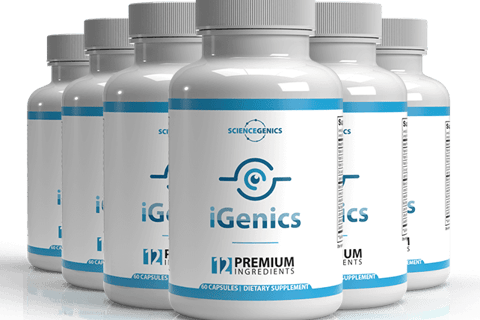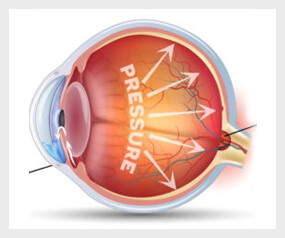7 Natural Ways to Fight Glaucoma (How Igenics Fits In)
7/2/20256 min read


Understanding Glaucoma: An Overview
Glaucoma is a group of eye conditions that result in damage to the optic nerve, which is vital for good vision. This damage is often caused by abnormally high pressure in the eye, known as intraocular pressure (IOP). As glaucoma progresses, it can lead to irreversible vision loss or even blindness if not managed properly. Early detection and treatment are crucial in preserving sight.
There are several types of glaucoma, but the two most common forms are open-angle glaucoma and angle-closure glaucoma. Open-angle glaucoma is characterized by a gradual increase in eye pressure, and it often develops without noticeable symptoms in its early stages. Conversely, angle-closure glaucoma can occur suddenly and is typically associated with symptoms such as severe eye pain, headaches, nausea, and vomiting. This form requires immediate medical attention to prevent significant vision loss.
The causes of glaucoma are multifaceted, often involving a combination of genetic predisposition, age, and increased intraocular pressure. Individuals with a family history of glaucoma are at a heightened risk, as are those over the age of 60. Other factors contributing to the development of glaucoma may include certain medical conditions, such as diabetes or hypertension, as well as prolonged use of corticosteroid medications.
Recognizing the symptoms and understanding risk factors associated with glaucoma is essential. Individuals are encouraged to have regular comprehensive eye exams, especially if they fall into high-risk categories. Such proactive measures can lead to timely interventions, protecting against potential vision impairment or loss. Overall, a deeper awareness of glaucoma will aid in maintaining eye health and quality of life.
5 Early Signs of Glaucoma:
1. Tunnel Vision: Individuals may experience a gradual loss of peripheral vision, making it difficult to see objects on the sides without moving their eyes, akin to looking through a tunnel.
2. Blurry Vision: Early stages of glaucoma can cause intermittent blurriness, especially in low-light conditions or when transitioning from bright to dark environments.
3. Halos Around Lights: Some people may notice colored halos surrounding lights, particularly at night, which is caused by fluid buildup in the eye affecting vision.
4. Eye Pain or Discomfort: While not always present, some individuals may experience sharp eye pain, headaches, or discomfort around the eyes, which may be a sign of increased intraocular pressure.
5. Frequent Changes in Prescription: If you notice that your glasses or contact lens prescription needs frequent adjustments, it might indicate underlying eye issues, including glaucoma.
Conventional Treatment Options for Glaucoma
Glaucoma is a progressive eye condition that can lead to irreversible vision loss if not managed appropriately. Conventional treatment options primarily focus on lowering intraocular pressure (IOP) to prevent damage to the optic nerve, which is critical for preserving vision. The most common initial treatment involves prescription eye drops. These drops, which may include prostaglandin analogs, beta blockers, or alpha agonists, work by either reducing the production of aqueous humor or facilitating its outflow from the eye, effectively lowering IOP.
In addition to eye drops, oral medications may be prescribed for patients who require more intensive therapy. These systemic medications, generally carbonic anhydrase inhibitors, decrease the production of aqueous humor. Although effective, oral medications are often used in conjunction with eye drops, as their side effects can limit their use in some patients.
For individuals who do not respond adequately to medical therapy, laser therapy serves as a viable option. Procedures such as selective laser trabeculoplasty (SLT) or argon laser trabeculoplasty (ALT) use focused light energy to enhance fluid drainage from the eye. This minimally invasive approach can effectively lower IOP with fewer side effects than medications. Patients often find laser treatment a convenient alternative, requiring less frequent follow-up compared to routine medical therapy.
In cases where both medication and laser therapies fail to maintain adequate IOP control, surgical interventions may be necessary. Surgical options include trabeculectomy, which creates a new drainage pathway for aqueous humor, and the implantation of drainage devices, aimed at enhancing fluid drainage. These procedures are typically reserved for advanced glaucoma cases or when a patient's condition demands more aggressive management.
Regular eye examinations are crucial for individuals at risk for glaucoma. Early detection and monitoring can facilitate timely intervention, preserving vision over the long term. Comprehensive eye exams allow for the assessment of IOP, optic nerve health, and visual fields, ensuring that patients receive appropriate treatment based on their specific needs.
7 Natural Ways to Support Eye Health and Combat Glaucoma
Glaucoma, an eye condition that can lead to vision loss, necessitates proactive measures for eye health. Implementing natural strategies not only empowers individuals but also complements conventional treatments. Here, we explore seven natural approaches that may help in fighting glaucoma and enhancing overall eye health.
1. Dietary Adjustments: A balanced diet rich in fruits and vegetables is vital for eye health. Foods high in antioxidants, such as leafy greens, berries, and citrus fruits, can help combat oxidative stress that contributes to glaucoma. Incorporating omega-3 fatty acids found in fish may also lower intraocular pressure.
2. Regular Exercise: Engaging in regular physical activity has been linked to lower ocular pressure. Activities like brisk walking, cycling, or yoga not only promote overall wellness but also enhance blood circulation within the eyes, which is essential for eye health.
3. Hydration: Staying adequately hydrated is crucial for maintaining eye pressure levels. Drinking enough water helps maintain the balance of fluids in the eye, potentially preventing the onset of glaucoma.
4. Herbal Supplements: Certain herbal supplements, such as bilberry and ginkgo biloba, are believed to support eye health due to their anti-inflammatory properties. Though research is limited, these supplements are commonly used in traditional practices to promote vision clarity.
5. Stress Management: Chronic stress has been linked to various health issues, including eye problems. Techniques such as meditation, deep-breathing exercises, and mindfulness can promote relaxation, which may help lower intraocular pressure.
6. Regular Eye Exams: While not a natural method per se, regular comprehensive eye exams are essential for early detection and management of glaucoma. These exams can help monitor eye pressure and optic nerve health efficiently.
7. Adequate Sleep: Ensuring sufficient quality sleep is integral to overall well-being, including eye health. Lack of sleep may exacerbate intraocular pressure. Aiming for 7-9 hours of restful sleep each night can aid in maintaining normal eye function.
By integrating these seven natural strategies into daily life, individuals can actively support their eye health and combat glaucoma. Each approach holds the potential to contribute positively, allowing readers to take charge of their vision health alongside conventional medical treatments.
How Igenics Can Help in the Fight Against Glaucoma
Igenics is a natural supplement specifically formulated to support eye health, particularly for individuals managing glaucoma. The formulation incorporates a combination of ingredients that have been researched for their potential role in reducing intraocular pressure (IOP) and enhancing overall visual wellness. Key constituents of Igenics include antioxidants and herbal extracts that aim to protect against oxidative stress, a factor often implicated in the progression of glaucoma.
Studies have indicated that certain antioxidants can play a vital role in stimulating blood flow and reducing IOP. For instance, bilberry extract, a prominent ingredient in Igenics, has been shown in various scientific investigations to promote ocular circulation, which may contribute to better eye health. Furthermore, minerals such as magnesium and potassium found in the supplement could help regulate fluid dynamics within the eye, thus supporting a more balanced intraocular pressure.
Patient testimonials reflecting on the use of Igenics often highlight improvements in their visual clarity and overall eye comfort. Many users report a noticeable change in their symptoms after incorporating the supplement into their daily routines, indicating its potential effectiveness as part of a comprehensive approach to glaucoma management. Importantly, it is advised that individuals discuss the introduction of Igenics with their healthcare providers to ensure that it complements their existing treatment plans and does not interfere with prescribed medications.
Click here to get the deal on Igenics
In conclusion, Igenics presents a promising option for individuals looking to naturally support their eye health as they navigate the challenges of glaucoma. Its scientifically backed ingredients and positive user feedback underline its place as a potentially valuable addition to conventional glaucoma treatments. The importance of personalized conversations with healthcare professionals cannot be overstated, as tailored advice will enhance the overall success of any glaucoma management strategy.




